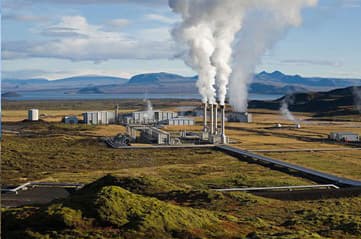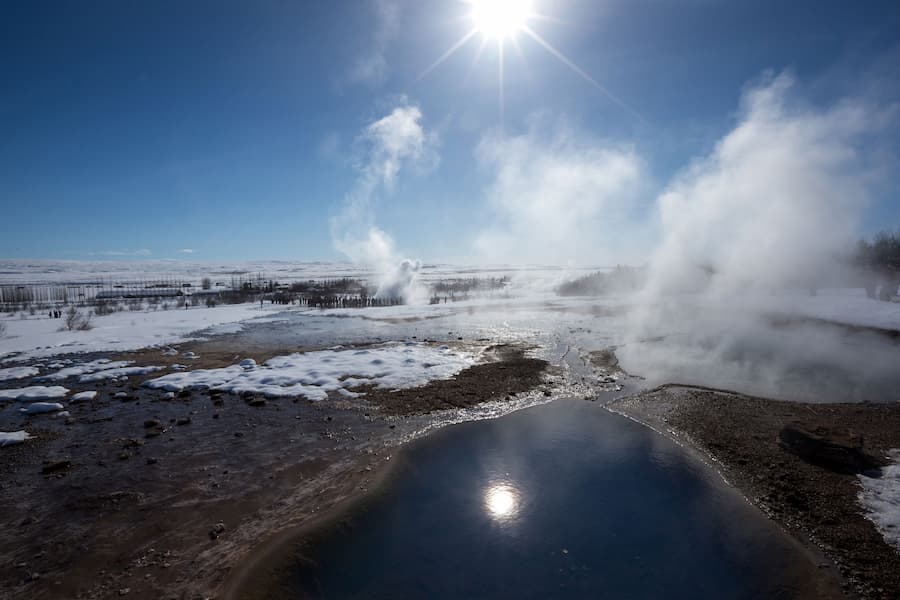Geothermal Energy
Geothermal energy is one of the many forms of alternative energy that could help solve the climate crisis.
Essentially, it harnesses the heat from the Earth in order to generate power and electricity.
Like wind power, geothermal energy has been used worldwide for thousands of years. For instance, hot springs were used by both Romans and Native Americans.
How Electricity is Often Produced
In order to generate electricity, water is often heated into steam which then runs through a turbine.
Examples of these include nuclear power, coal and natural gas.
However, with this new form of alternative energy, steam could be created from the heat of the Earth without generating any greenhouse gases or risking a nuclear disaster.
Countries Using This Energy
Already, there are more than twenty countries currently using this new technology including Iceland, the United States, Japan, Italy, Indonesia, New Zealand, Mexico, the Philippines, Kenya, Costa Rica, and Nicaragua.

How it Works
There are many different ways in which this energy is captured.
Firstly, by drilling deep into the ground, hot water where the earth is porous (has space for liquids) can be extracted through specialized equipment in order to create steam which will subsequently turn turbines.
However, if there is no water present, an enhanced geothermal system can be established. This method produces electricity.
Secondly, the hot geothermal water could be used directly for agriculture, district heating, heating pools (i.e. hot springs), and laundries, to name a few. This is also known as direct-use geothermal.

Disadvantages of Geothermal Energy
With our current technology, this form of alternative energy is only efficient in certain countries.
More specifically, there is a lot of geothermal potential in the Ring of Fire, an area of high tectonic activity that circles the Pacific. In this area, large amounts of heat rise to the Earth’s surface.
Moreover, drilling is very expensive thus the price of harnessing this energy source increases exponentially with depth.
However, due to a lack of funding and political will, certain countries are not developing this new technology despite their available geothermal resources.
Nonetheless, as technology advances, the expense of drilling will be reduced and the efficiency of geothermal power plants will be improved.

Advantages of Geothermal Energy
As mentioned before, geothermal energy does not require the use of fossil fuels and is a form of renewable energy that is clean as well as reliable.
In fact, the first geothermal power plant which started in 1904 is still operational. Moreover, these power plants provide a steady flow of power as they operate for more than 95% of the year.
In Iceland, geothermal energy is used for 87% of its heating and over 25% of its electricity.

An Important Alternative Energy Source
In order to build a sustainable future, we need to use more alternative energy sources.
Clearly, countries should not neglect geothermal resources, and must require more political will in order for change to take place.
Right now, the best way to help develop more geothermal power plants is to raise awareness as that will inevitably place more pressure on governments to take action.
Although we cannot depend solely on this type of energy due to the scarcity of geothermal potential, it is an important alternative energy source that can lead us to a more sustainable future.
Further Reading and Sources
- Home
- Alternative Energy
- Geothermal Energy
Join the Community and Newsletter (5000 Subscribers)
You can subscribe to my Substack Page or see the archives of previous posts. More great content coming soon!
Recent Articles
-
Climate Change Guide
Apr 23, 24 12:36 PM
The Climate Change Guide is your guide to a more sustainable future, and will provide you with all relevant information on mankind's greatest challenge. -
Climate Presentations by Climate Reality
Mar 03, 24 12:17 AM
You can see great climate presentations by Climate Reality. They can be customized for different audiences. -
Make the Planet Great Again!
Mar 02, 24 11:33 PM
We need to make the planet great again! We will build a solar wall along the Mexican border and make the fossil fuel industry pay for it! -
Historical Climate Change News
Mar 02, 24 11:25 PM
This section includes historical climate change news you should know about. These articles span several different topics and will help you stay up-to-date.



